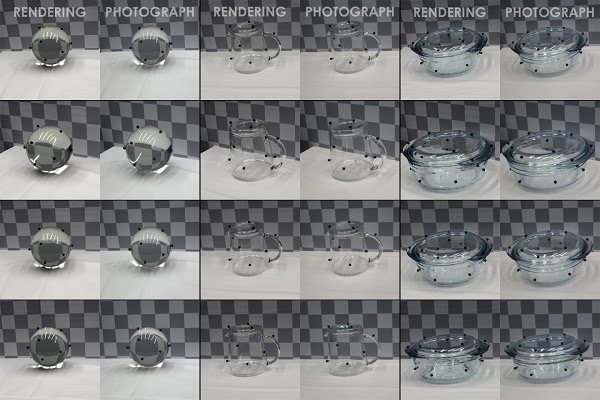
Photorealistic 3D Renderings Accurately Digitize Transparent Objects
KONGENS LYNGBY, Denmark, Sept. 28, 2017 — The ability to create detailed, 3D digital versions of clear objects and their surroundings has been difficult for researchers because of the different modalities required to digitize objects with diffuse reflectance properties.

Researchers developed a workflow that allows 3D rendering of clear objects, which are challenging to digitize. Courtesy of Jonathan Stets, Alessandro Dal Corso and Jeppe Frisvad, Technical University of Denmark.
Scientists from the Technical University of Denmark have created a new imaging technique that could be useful for movie production, creating virtual reality experiences, improving design and quality assurance in the production of clear products, and even for preserving rare or culturally significant objects.
Transparent objects are challenging to digitize because their appearance comes almost completely from their surroundings. To overcome this challenge, the researchers developed the method using a robotic arm to record the precise locations of two cameras used to image scenes containing a clear object.
"The robotic arm allows us to obtain a photograph and a 2D computed, or rendered, image that can be compared pixel by pixel to measure how well the images match," said Alessandro Dal Corso, co-leader of the Technical University of Denmark research team. "This quantitative comparison was not possible with previous techniques and requires extremely precise alignment between the digital rendering and photograph."
With the detailed spatial information, they were able to take photographs of the scene, remove the object and scan it in a CT scanner. They then placed it back into the scene — both digitally and in real life — to accurately compare the real-life scene and its virtual reconstruction.
"By more accurately digitizing transparent objects, our method helps move us closer to eliminating the barrier between the digital and physical world," said researcher Jonathan Stets. "For example, it could allow a designer to place a physical object into a digital reality and test how changes to the object would look."
Once the digital versions of the objects are finalized, the method provides information about the object's material properties that are distinct from its shape, allowing the scanned clear object to look realistic in a digital environment.
Using an optical setup containing readily available components, the researchers tested their new workflow by digitizing three scenes, each containing a different glass object on a table with a white and gray checkerboard backdrop. They began by acquiring structured light scans of the scene, an imaging method that uses the deformation of a projected pattern to calculate the depth and surfaces of objects in the scene. They also used a chrome sphere to acquire a 360-degree image of the surroundings. The scene was illuminated with LEDs arranged in an arc to capture how light coming from different angles interacted with the opaque parts of the scene. The researchers also separately scanned the glass objects in a CT scanner, which provided information to reconstruct the object's surface. Finally, the digital version of the scene and the rendered glass object were combined to produce a 3D representation of the whole scene.
Quantitative analysis showed that the images of the digital scene and the real-world scene matched well and that each step of the new imaging workflow contributed to the similarity between the rendered images and the photographs.
The approach also provides a noncontact way to measure a material's optical properties, making it potentially useful for a wide range of applications beyond movies and virtual reality, to include quality assurance in the production of clear products.
The research was published in The Optical Society journal Applied Optics (doi: 10.1364/AO.56.007679).
Published: September 2017